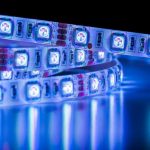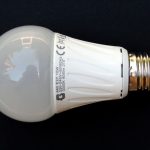Effortlessly Upgrade Your Lighting: Rewire Fluorescent Light for LED in 5 Easy Steps
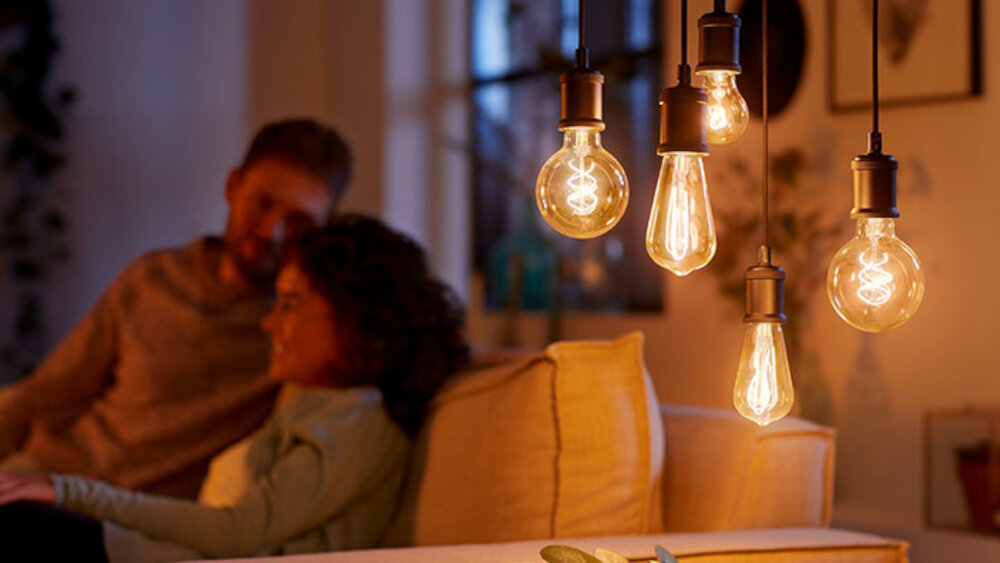
Are you tired of the dull and unattractive lighting in your home or office? Do you wish to upgrade your fluorescent lighting to LED but don’t know where to begin? Look no further, as we present to you five easy steps to effortlessly rewire your fluorescent light to LED. Not only will this upgrade improve the aesthetics of your space, but it will also help you save money on energy bills in the long run. LED lights are a popular choice for modern lighting solutions due to their energy efficiency, durability, and longevity. However, many homes and offices still use fluorescent lighting, which can be dim, flicker, and emit a buzzing sound. Fortunately, you don’t have to replace your entire lighting fixture to switch to LED. With just five easy steps, you can rewire your fluorescent light to LED and enjoy brighter, clearer, and more efficient lighting in no time. So, let’s dive into the steps and learn how to upgrade your lighting effortlessly.
LED lights, also known as Light Emitting Diodes, are becoming increasingly popular due to their numerous benefits. One of the main advantages of LED lights is their energy efficiency. LED lights use significantly less power than traditional lighting sources, which helps reduce energy consumption and lower electricity bills. Additionally, LED lights have a longer lifespan than other types of lighting, which means fewer replacements and less waste. They also produce less heat, which makes them safer to use and reduces the risk of fire. LED lights are also highly customizable, allowing for various color temperatures, brightness levels, and even color-changing options. All of these benefits make LED lights an excellent choice for anyone looking to upgrade their lighting system.
Upgrading your lighting system is essential for a multitude of reasons. Firstly, it can help you save money on your energy bills by reducing electricity consumption. Secondly, it can create a safer and more comfortable environment for you and your family, as LED lights produce less heat and are less likely to cause fires. Additionally, upgrading your lighting can also enhance the aesthetic appeal of your space, as LED lights offer a wider range of color temperatures and are more customizable than traditional fluorescent lights. Lastly, upgrading to LED lights can also benefit the environment by reducing your carbon footprint and preventing the disposal of hazardous materials found in fluorescent lights. In conclusion, upgrading your lighting system is a smart investment that can bring numerous benefits to your home or workspace.
Understanding the Differences Between Fluorescent and LED Lights
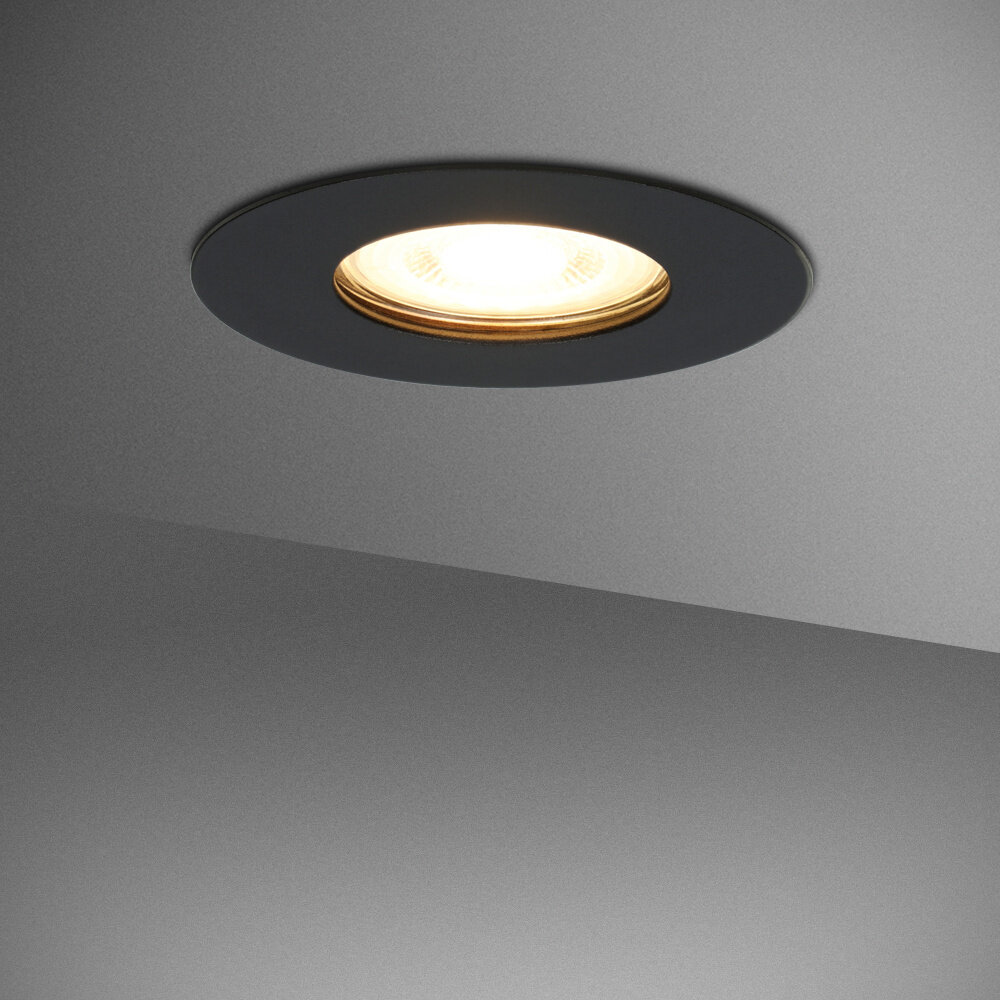
When it comes to lighting, it’s important to understand the differences between fluorescent and LED lights. Fluorescent lights have been around for decades and are known for their bright, white light. However, they can be bulky and contain toxic materials like mercury, which makes them difficult to dispose of properly. On the other hand, LED lights are much more energy-efficient and do not contain any hazardous materials, making them a more sustainable option. LED lights are also smaller and more flexible, which means they can be used in a wider variety of settings. One of the biggest differences between fluorescent and LED lights is their energy consumption. Fluorescent lights are notorious for using a lot of energy, which can lead to high electricity bills. LED lights, on the other hand, are much more energy-efficient and can use up to 75% less energy than fluorescent lights. Additionally, LED lights have a longer lifespan, which means they need to be replaced less often, further reducing their environmental impact. With the increasing emphasis on sustainability and energy efficiency, it’s becoming more and more important to make the switch to LED lights.
Fluorescent lights operate by using a gas discharge and a phosphorescent coating on the inside of the glass tube. When an electric current passes through the gas, it excites the atoms, causing them to emit ultraviolet radiation. The phosphorescent coating absorbs this radiation and then emits visible light. The color of the light emitted is determined by the type of phosphorescent coating used. Fluorescent lights are more energy-efficient than incandescent bulbs because they produce less heat and more light. Additionally, they last longer than traditional bulbs, making them an excellent choice for lighting large commercial spaces or homes. However, they do contain small amounts of mercury, which can be harmful to the environment, so it’s essential to dispose of them properly.
When it comes to lighting, LED lights are the clear winner compared to fluorescent lights. LED lights have a longer lifespan, consume less energy, emit less heat, and are more environmentally friendly. They also offer a wider range of colors and are dimmable. In addition, LED lights do not contain harmful substances like mercury, which is present in fluorescent lights. Although LED lights may have a higher initial cost, the long-term savings in energy bills and the extended lifespan make them a worthwhile investment. Upgrading from fluorescent to LED lighting can not only improve the aesthetics of a space but also provide a more efficient and sustainable solution.
LED lights have become increasingly popular due to their numerous advantages over fluorescent lights. One of the most significant advantages of LED lights is their energy efficiency. LED lights consume up to 75% less energy than fluorescent lights, which translates to lower energy bills and reduced carbon footprint. LED lights also have a longer lifespan, lasting up to 25 times longer than fluorescent lights. Additionally, LED lights are more durable and resistant to shock and vibrations, making them ideal for outdoor and industrial settings. Furthermore, LED lights are mercury-free, making them safer for the environment and easier to dispose of. Overall, upgrading to LED lights is a smart and eco-friendly choice that can save you money and provide better lighting quality.
Materials and Tools Required for Rewiring Fluorescent Light for LED
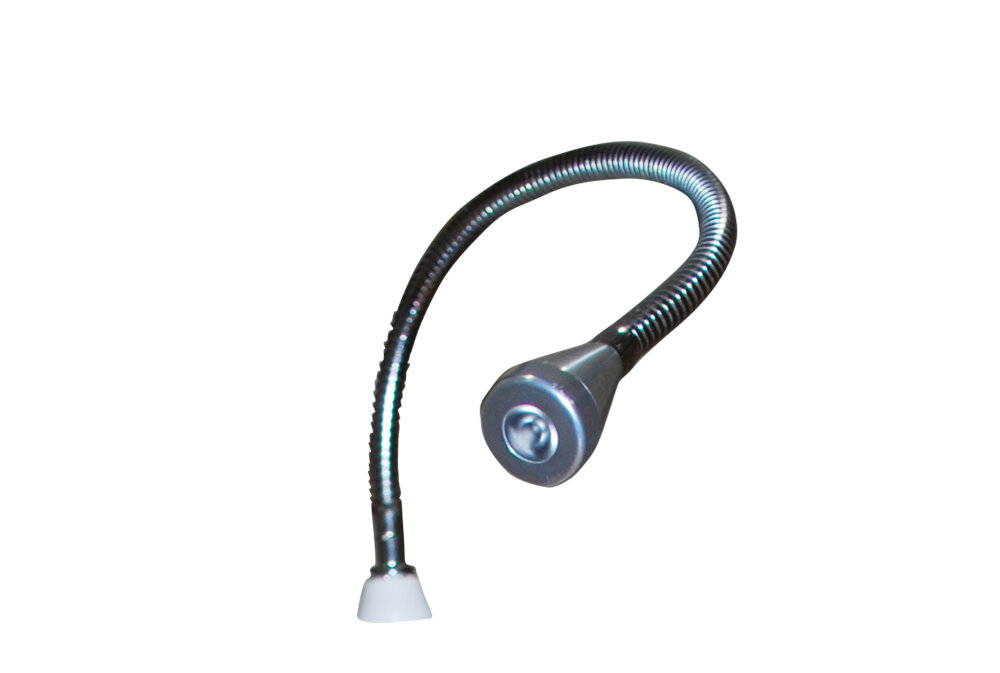
In order to rewire a fluorescent light for LED, you will need a variety of materials and tools. Firstly, you will need an LED retrofit kit. This kit can come in a variety of sizes and styles, so it is important to find one that is compatible with your existing fluorescent light fixtures. You will also need wire strippers, wire nuts, a screwdriver, pliers, and a voltage tester. These tools will be used to remove the old wiring and install the new LED wiring. Additionally, you may need a ladder or step stool to access the light fixture, as well as safety goggles to protect your eyes during the rewiring process. It is important to note that rewiring a fluorescent light for LED can be a complex process, especially if you are not familiar with electrical wiring. If you are not confident in your ability to complete the rewiring process safely, it is strongly recommended that you consult a licensed electrician. Additionally, it is important to follow all manufacturer instructions and safety guidelines when working with electrical wiring. With the proper materials and tools, rewiring a fluorescent light for LED can be a simple and effective way to upgrade your lighting and reduce your energy costs.
Before starting the process of rewiring your fluorescent light for LED, it’s important to gather all the materials required to complete the task. The list includes a voltage tester, wire strippers, wire connectors, LED tube lights, a ladder, and a screwdriver. Additionally, it’s recommended to wear gloves and safety glasses to protect yourself during the process. It’s important to ensure that all the materials are of good quality and compatible with the LED tube lights to avoid any risk of electrical short-circuit or fire hazards. By having all the materials at hand, you can efficiently upgrade your lighting without any hassle.
To successfully rewire a fluorescent light for LED, there are several tools you will need to have on hand. Firstly, you will need a voltage tester to ensure the power is disconnected before you begin the process. Secondly, a pair of wire strippers will be necessary to remove the insulation from the wires. A wire cutter will also be needed to trim the wires to the correct length. Additionally, a screwdriver will be required to attach the wires to the LED driver and to secure the light fixture back in place. Finally, a drill or hole saw will be necessary to create a hole for the LED driver to fit through. With these tools, you can upgrade your lighting to be more energy-efficient and longer-lasting.
When it comes to upgrading your lighting, purchasing the right materials and tools is crucial to ensuring a successful project. First, determine the type of lighting you want to upgrade to and research the necessary materials and tools needed for the job. Consider the quality of the materials you purchase as it will impact the longevity and effectiveness of your lighting. Ensure that the tools you purchase are appropriate for the job and that you have the necessary safety gear. Don’t be afraid to ask for advice or recommendations from professionals or experienced DIYers. Remember, investing in high-quality materials and tools will save you time and money in the long run.
Steps for Rewiring Fluorescent Light for LED
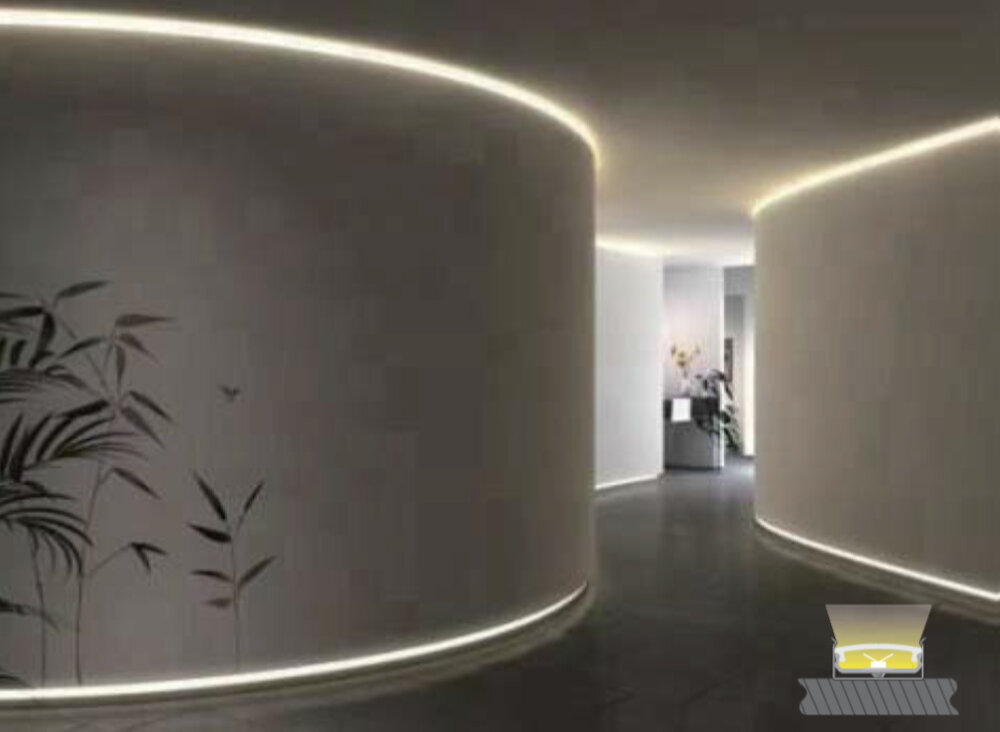
Rewiring fluorescent light for LED is a simple process that can be completed in just five easy steps. First, you will need to gather the necessary tools and supplies, including wire cutters, wire strippers, electrical tape, and a compatible LED driver. Once you have everything you need, you can begin the rewiring process by shutting off the power to the fluorescent light fixture and removing the fluorescent bulbs and ballast. Next, you will need to connect the wires from the LED driver to the appropriate wires in the light fixture, using wire nuts to secure the connections. Once all the wires are connected, you can install the LED bulbs and turn the power back on to the fixture. With just a few simple steps and some basic tools, you can upgrade your lighting from fluorescent to LED and enjoy the many benefits that come with this energy-efficient lighting option. In addition to being more energy-efficient, LED lighting offers a range of other benefits, including longer lifespan, improved color quality, and reduced maintenance requirements. By upgrading your fluorescent lighting to LED, you can enjoy these benefits while also reducing your energy bills and your impact on the environment. So why wait? Follow these easy steps to rewire your fluorescent light for LED and start enjoying the many benefits of this modern and efficient lighting option today!
If you’re looking to upgrade your lighting system to a more energy-efficient option, you might want to consider rewiring your fluorescent lights for LED. This process can seem daunting, but with these step-by-step instructions, it’s actually quite easy. First, gather your supplies, which will include LED bulbs, a wire cutter, and electrical tape. Then, turn off the power source to the fixture and remove the fluorescent tube and ballast. Next, connect the wires from the fixture to the LED bulbs, securing them with electrical tape. Finally, install the LED bulbs and test the fixture to ensure it’s working properly. By following these simple steps, you can effortlessly upgrade your lighting system and start enjoying the benefits of LED technology.
Upgrading your lighting system from fluorescent to LED is a great way to save energy and money, but there are some common mistakes that people make during the process. One of the biggest mistakes is not properly identifying the wiring and voltage of the existing fixture before attempting to rewire it. Another mistake is using the wrong type of LED bulb or driver for the fixture, which can lead to flickering or even damage to the bulb. Additionally, it’s important to make sure that all connections are properly secured and insulated to avoid any fire hazards. Finally, it’s crucial to follow all safety procedures and use the appropriate tools when working with electrical wiring. By avoiding these common mistakes, you can easily upgrade your lighting system and enjoy the benefits of energy-efficient LED lighting.
When working with electrical wiring, it’s essential to prioritize safety to avoid any unfortunate accidents. Firstly, always turn off the power supply to the area where you will be working. This will prevent any electrical shocks or power surges. It’s also important to wear appropriate gear, such as rubber-soled shoes and gloves, to insulate yourself from any potential electrical currents. Additionally, ensure that all tools and equipment are in good condition and suitable for the job. Avoid using damaged or faulty tools, and make sure that they are insulated and rated for electrical use. Finally, never attempt to work on electrical wiring if you’re not confident or experienced. Always consult a licensed electrician if you’re unsure about any aspect of the job.
Additional Tips and Advice
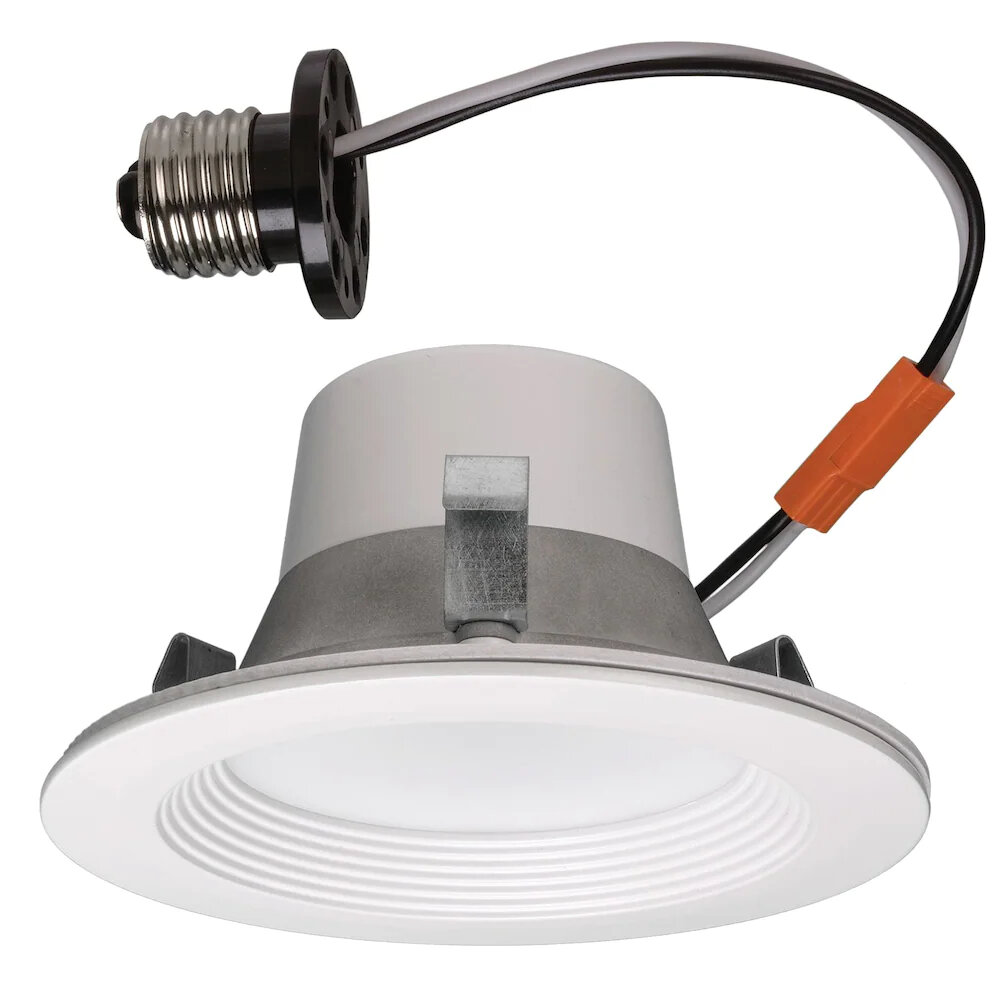
When it comes to upgrading your lighting, there are a few additional tips and advice that you should keep in mind to make the process as effortless as possible. Firstly, it’s important to consider the brightness and color temperature of your new LED lights. You want to make sure that you choose LED lights that are bright enough for your space, but not so bright that they become uncomfortable or overwhelming. Additionally, you want to choose a color temperature that complements the room’s design and atmosphere. For example, warm white LED lights are perfect for creating a cozy and inviting atmosphere in living rooms and bedrooms, while cool white LED lights are great for brightening up kitchens and bathrooms. Another important tip to keep in mind is to use high-quality LED lights from reputable brands. While it may be tempting to save money by purchasing cheaper LED lights, these lights often have a shorter lifespan and can fail more quickly. By investing in high-quality LED lights from trusted brands, you’ll not only enjoy better performance and longevity, but you’ll also be able to take advantage of manufacturer warranties and customer support. Finally, always remember to follow the manufacturer’s instructions carefully when installing your new LED lights. This will ensure that your lights are installed safely and correctly, and that you’re able to enjoy the full benefits of your new lighting upgrade.
When upgrading your lighting from fluorescent to LED, it’s essential to choose the right LED bulbs for your needs. Start by considering the color temperature you desire, as LED bulbs come in a range of shades from warm white to cool daylight. Next, check the bulb’s brightness, measured in lumens, to ensure it provides the same or greater amount of light as your current fluorescent bulb. Additionally, look for bulbs with a high Color Rendering Index (CRI) to ensure they accurately display colors. Lastly, consider the bulb’s dimming capabilities if you plan to use it with a dimmer switch. By taking these factors into account, you can select the perfect LED bulbs for your lighting needs.
While rewiring fluorescent lights for LED is an effective way to upgrade your lighting system, it’s not the only option available. One alternative is to replace your incandescent or CFL bulbs with LED bulbs. These bulbs use less energy and have a longer lifespan, making them a more cost-effective and environmentally-friendly choice. You can also install smart lighting systems that allow you to control your lights with your smartphone or voice assistant, adjust the color temperature to match your mood, and even set schedules to turn your lights on and off automatically. Another option is to install dimmer switches, which not only increase energy efficiency but also allow you to create different lighting moods for different occasions. Whatever your choice, upgrading your lighting system can have a significant impact on your home’s atmosphere and your energy bills.
When upgrading your lighting from fluorescent to LED, there are a few common issues that may arise during the process. One of the most common issues is flickering, which can be caused by a variety of factors such as incompatible dimmer switches or faulty wiring. To troubleshoot this issue, try replacing the dimmer switch or checking the wiring connections to ensure they are properly secured. Another common issue is uneven lighting, which can be caused by poor installation or incorrect bulb selection. To fix this issue, ensure that each bulb is installed properly and consider replacing them with bulbs that have a more even distribution of light. In addition, make sure to properly dispose of any fluorescent bulbs to avoid environmental harm.
Upgrading to LED lights is a smart investment that can bring a plethora of benefits to both your home and your pocket. LED lights have a significantly longer lifespan than traditional bulbs and can save you up to 70% on energy costs. They emit less heat than incandescent bulbs, making them safer and more efficient. Moreover, LED lights are environmentally friendly as they do not contain toxic chemicals like mercury. They come in a variety of colors and styles, allowing you to customize your lighting to fit any mood or occasion. With all of these benefits and more, upgrading to LED lights is a no-brainer for anyone looking to improve their lighting and save money in the long run.
Upgrading to LED lighting can be a game-changer, but rewiring fluorescent light fixtures may seem daunting. However, with just five easy steps, you can effortlessly upgrade your lighting. First, turn off the power and remove the fluorescent tubes and ballast. Second, identify the wires and disconnect them from the ballast. Third, connect the LED driver to the wires and mount it in the fixture. Fourth, connect the LED tubes to the driver and install them in the fixture. Finally, turn the power back on and enjoy the energy-efficient, long-lasting benefits of LED lighting. With these simple steps, you can easily rewire your fluorescent lights for LED and save money while improving the lighting in your space.
Are you tired of the dull and harsh lighting in your workspace or home? It’s time to take action and upgrade your lighting system. With just a few simple steps, you can transform your space with energy-efficient LED lighting. Not only will you enjoy a brighter and more pleasant atmosphere, but you’ll also save money on your energy bills in the long run. Don’t wait any longer to make this easy and effective change. Take the first step and rewire your fluorescent lights to LED today. Your eyes and wallet will thank you.
Conclusion

In conclusion, upgrading your lighting from fluorescent to LED may seem like a daunting task, but with these 5 easy steps, it can be accomplished effortlessly. Not only will LED lighting save you money on energy costs, but it also offers a brighter and more efficient lighting solution. By rewiring your fluorescent lights, you can easily make the switch to LED and enjoy the benefits of modern lighting technology. So, don’t hesitate, take the leap and upgrade your lighting today!

